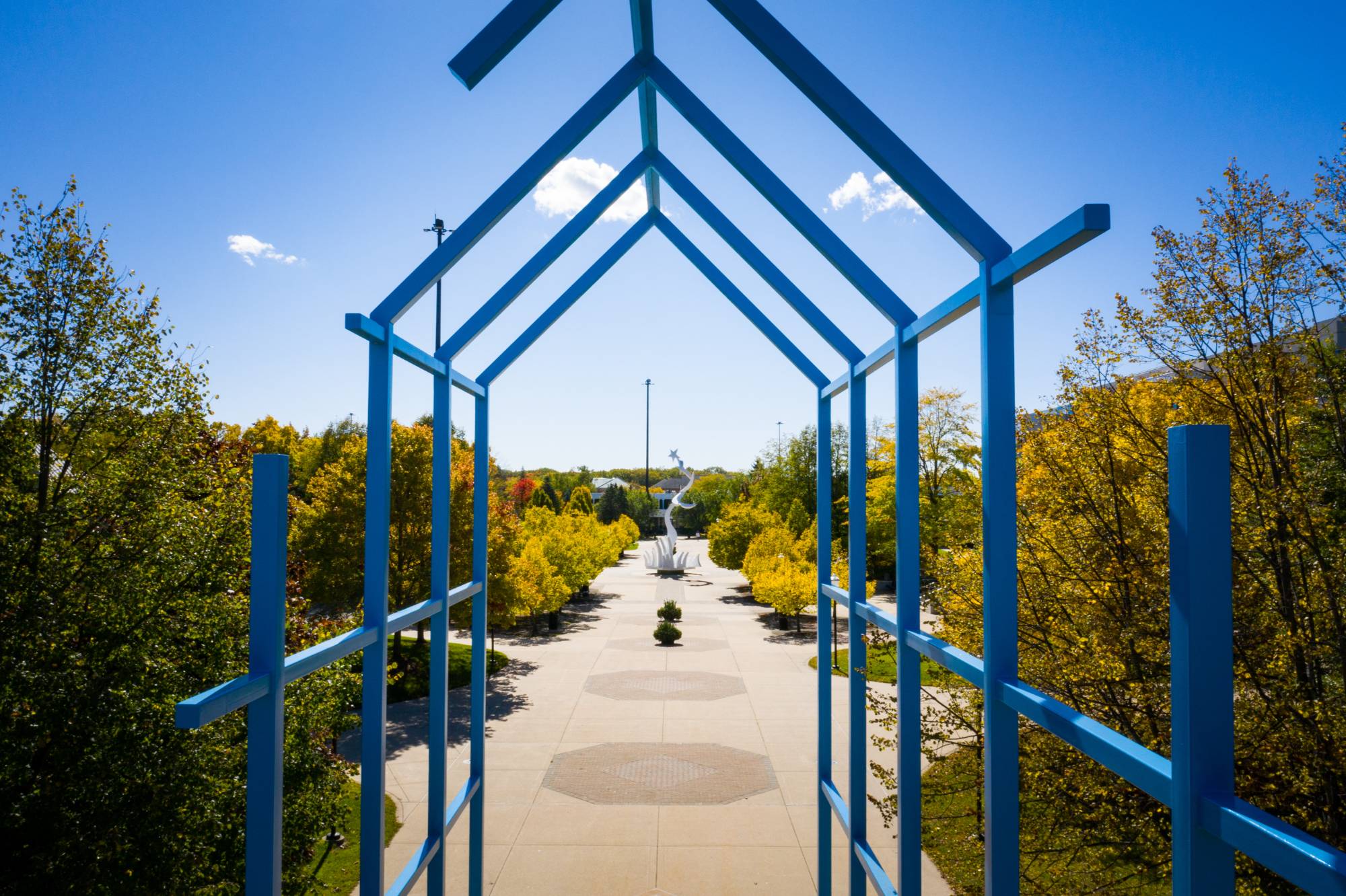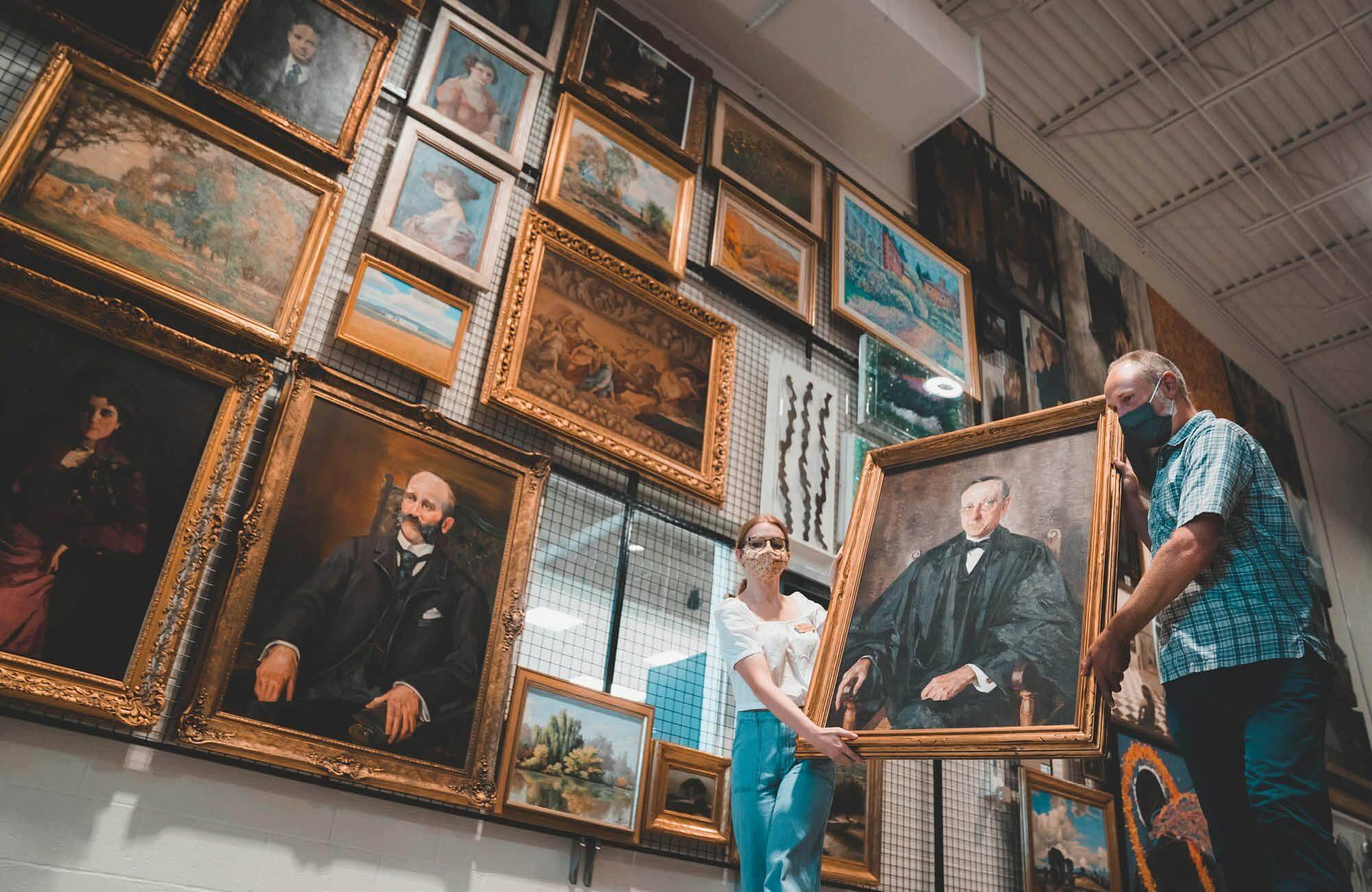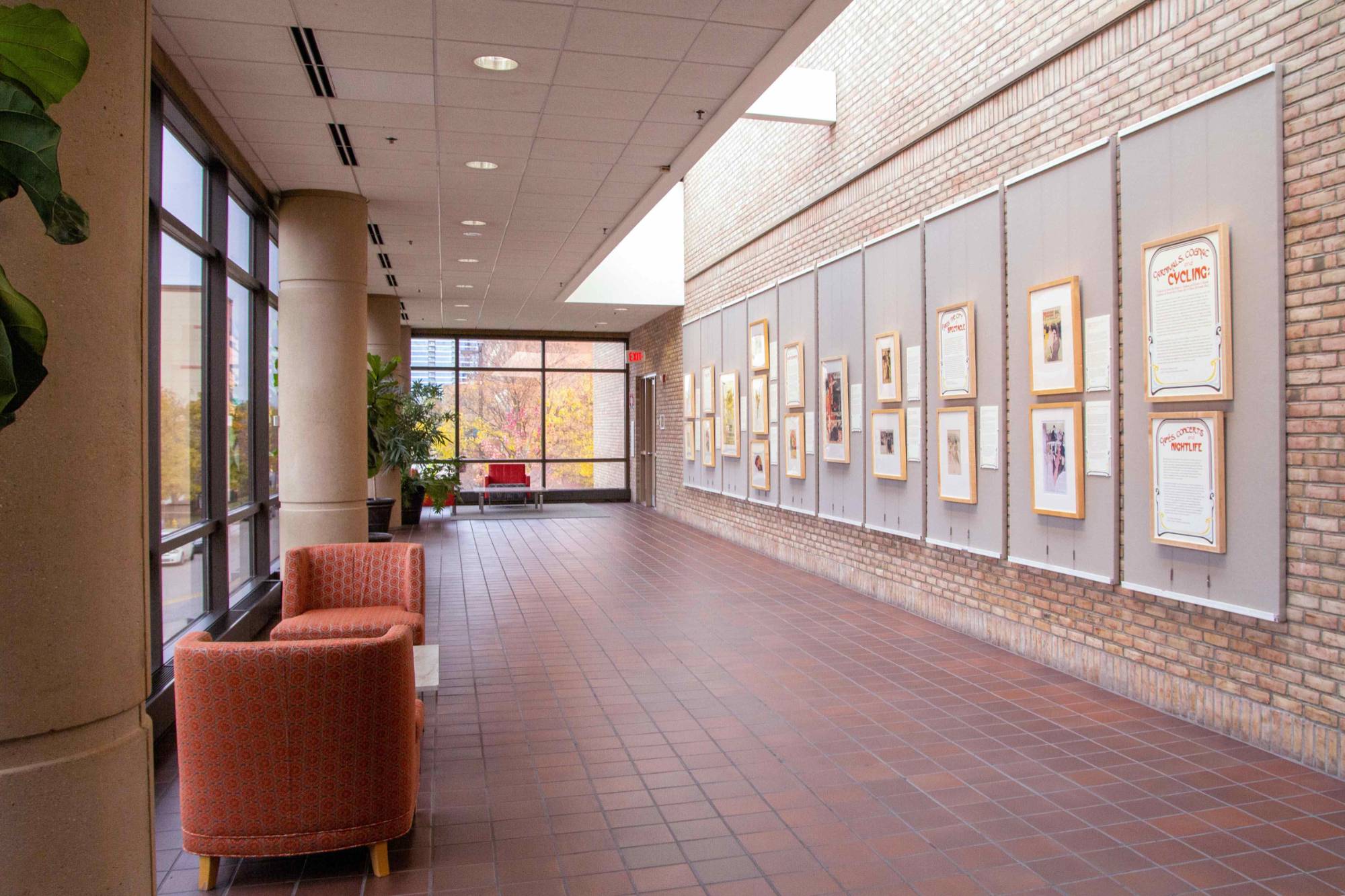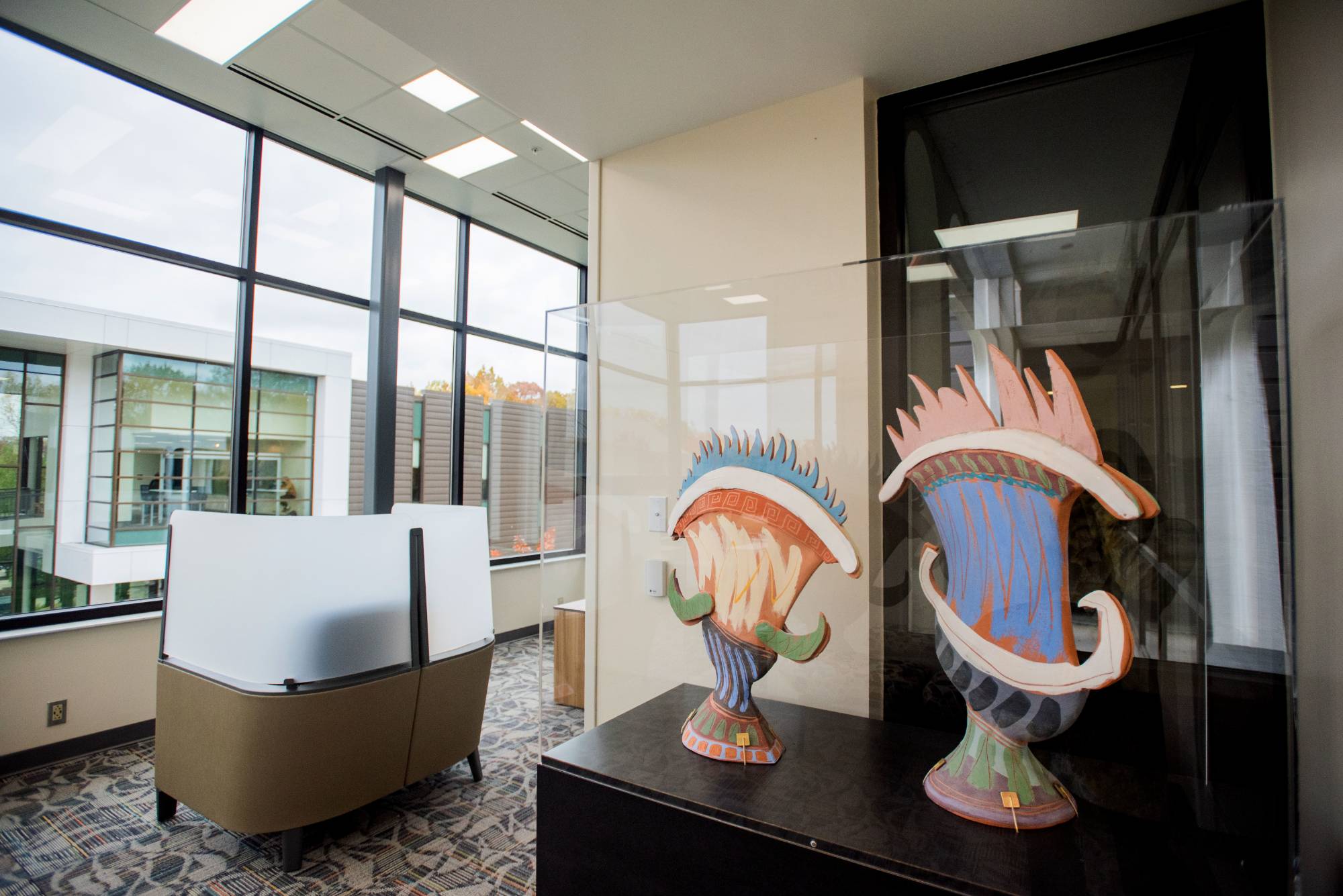History of Art on Campus

Grand Valley State University has long believed that learners of all ages and backgrounds should have unrestricted access to art.
For over 50 years, Grand Valley has been collecting and displaying art around its growing campuses. Today artwork is on view inside buildings on seven different GVSU campuses (Allendale, Grand Rapids, Muskegon, Holland, Traverse City, Detroit, and Battle Creek). Many of these pieces have become uniquely ingrained into the GVSU experience. How many of us have referenced Cyril Lixenberg’s yellow steel Amaranth sculpture when giving directions to Mackinac Hall or walked through Gary Kulak’s soaring Transformational Link sculpture backwards during exam week for good luck? Dale Eldred’s kinetic pendulum sculpture has been a fixture on campus since 1973 and even had its own unofficial Twitter hashtag trend a few years ago (#GVSUWreckingBall).
The artwork in the collection, the second largest in the state of Michigan, comes from different traditions and serves different purposes. However, the real merit of the collection is that it has the power to move people; to bridge gaps in understanding; to spark our collective imagination toward building a better, more equitable world; and to enrich learning experiences beyond the capacity of traditional classroom structures.


President Emeritus Arend D. Lubbers recognized this and expanded the collecting effort during his tenure (1969-2001) with the purpose of creating a policy in which every building should be an art gallery. This notion goes against the very fabric of the traditional art museum world, one filled with controlled exhibition spaces, strict visitor expectations and very specific areas of subject expertise. Our unconventional approach means that art at GVSU is everywhere. You will encounter work by alumni as you walk down the halls of the living centers, regional artwork from the Midwest on your way to class and international sculptures as you traverse the grounds. Nearly half of the art collection is displayed in public spaces throughout all GVSU buildings.
Many artists, collectors, and donors find great value in our approach to displaying and engaging with art in educational settings. For this reason, many of the objects in the art collection have come to the university through donations and bequeaths. In other instances, when specific needs in the collection are identified, we have partnered with generous donors to acquire the work. This model for building the collection has ensured that our resources are more often used for collection care, exhibition support, and the development of learning events and materials.

As a result, we have assembled a diverse art collection that is used for a multitude of interdisciplinary purposes. Music composition students have written original music influenced by the paintings created by German-American Grand Rapids regional painter Mathias Alten. Dance performances have been inspired by and choreographed from the Robert L. Hoskins and Erwin A. Raible Collection of Fin de Siécle French Prints. Poetry has been written about contemporary sculpture from the Netherlands. And graduate students from the School of Computing and Information Systems have developed mobile applications utilizing the entire art collection.
This unique approach to collecting and displaying art supports GVSU’s broader mission to “empower learners in their pursuits, professions, and purpose. The university enriches society through excellent teaching, active scholarship, advancement of equity, and public service.” To this end, we seek to actively collaborate with community partners in the production of learning materials, experiences, and events based on artwork in the collection, as well as the placement of art in public buildings.
To learn more about supporting the GVSU art collection visit gvsu.edu/artgallery/give.

